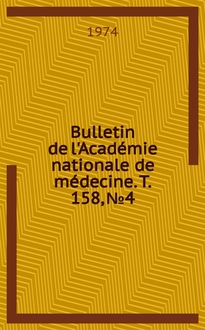Science Bulletins: Deciphering History's Deadliest Pandemic
The unusual severity of 1918's "Spanish flu" pandemic has eluded explanation for nearly a century. Unlike typical flu epidemics, most of the victims in 1918 were ...
American Museum of Natural History
Science Bulletins: Tracing the First Americans
When and where did humans first enter the Americas—and what routes did they travel to colonize the continents? These are big questions for scientists studying ...
American Museum of Natural History
Science Bulletins: WISE to Scan the Infrared Sky
NASA's latest space telescope-the Wide Field Infrared Explorer, or WISE-recently took its first images of the sky around Earth in infrared light. In its initial ...
American Museum of Natural History
Science Bulletins: Bee Deaths Linked to Common Pesticides
Several recent studies have questioned whether exposure to common pesticides might be impairing bee performance and contributing to the observed ...
American Museum of Natural History
Science Bulletins: Down and Dirty Biodiversity
The soils in tundra, grasslands, tropical forests are very different, but they have one thing in common; they all host an astounding diversity of life. Inhabiting these ...
American Museum of Natural History
Science Bulletins: Supramap Tracks Diseases as They Evolve
As pathogens mutate they can become more dangerous, developing resistance to drugs or migrating to new host species. Tracking mutations helps scientists ...
American Museum of Natural History
Science Bulletins: Introducing the Denisovans
New research led by scientists at Germany's Max Planck Institute for Evolutionary Anthropology confirms that a 40000-year-old finger bone and tooth belong to a ...
American Museum of Natural History
Science Bulletins: Monitoring Mount Etna—Magma on the Move
Scientists in Sicily are collecting an enormous amount of data to monitor moving magma inside Mt. Etna, one of the most active volcanoes in the world. Nearly a ...
American Museum of Natural History
Science Bulletins: Beyond Our Solar System—Searching for Extrasolar Planets
Astrophysicists are discovering new extrasolar planets—those outside our Solar System—almost daily. NASA's Spitzer Space Telescope (originally called SIRTF ...
American Museum of Natural History
Science Bulletins: Super Corals—Understanding the Science (3 of 3)
Marine biologists in Hawaii investigate so-called “super corals,” which thrive even as ocean temperatures rise. In Understanding the Science, watch scientists in ...
American Museum of Natural History
Science Bulletins: The Rise of Fire
Wildfires, whether ignited by lightning or people, show global patterns that are visible to satellites. In the United States, fire is increasing: on average, millions ...
American Museum of Natural History
Science Bulletins: Hubble Space Telescope—25 Years and Counting
Few of NASA's telescopes have captured the public imagination like Hubble, with its spectacular views of distant galaxies, supernovas, and nebulas. The first ...
American Museum of Natural History
Science Bulletins: In Search of Wild Variety
To help build the catalog of life, biologists at AMNH search the globe for species that have never been scientifically described. Discover seven of these new ...
American Museum of Natural History
Science Bulletins: Archived in Ice—Rescuing the Climate Record
Follow scientist-adventurer Lonnie Thompson to the 5670-meter-high Quelccaya ice cap in the Peruvian Andes. Thompson and his team from Ohio State ...
American Museum of Natural History
Science Bulletins: Jupiter's Shrinking Storm
Jupiter is a planet of extremes—it's the biggest in our solar system, it spins the fastest, it hosts the most moons, and it has the most turbulent atmosphere. But one ...
American Museum of Natural History
Science Bulletins: Geologists on Mars
In March 2004, two NASA explorers discovered firm evidence that water once flowed on Mars—perhaps enough water to harbor life. Science Bulletins is a ...
American Museum of Natural History
Science Bulletins: Protecting Wildlife in a Changing Climate
As the global climate changes, wild animals are shifting where they live—even beyond the protected areas that are crucial to their survival. This visualization ...
American Museum of Natural History
Science Bulletins: Urban Sprawl—Phoenix
Most people think of urban sprawl as the construction of roads and buildings at a rate that exceeds population growth. Phoenix, Arizona, however, offers a ...
American Museum of Natural History
Science Bulletins: Deep-Sea Cephalopods Hide Using Light
Many kinds of octopus, cuttlefish, and squid are masters of disguise. They conceal themselves using chromatophores—specialized skin cells that hold pigment ...
American Museum of Natural History
Science Bulletins: SOFIA—Stars and the Space Between
By sending an infrared telescope to altitudes of 12000 meters (40000 feet) and higher, NASA and the German Aerospace Center (DLR) conduct astronomical ...
American Museum of Natural History
Science Bulletins: Bat Succeeds at Part-Time Pollination
Many plants and their pollinators co-evolved specialized adaptations that aid pollination. But researchers recently found that a species of desert bat that is not ...
American Museum of Natural History
Science Bulletins: Water Underground
Texas endured its driest year ever in 2011, and southern Alabama and Georgia have continued to suffer serious drought in 2012. Climate change is predicted to ...
American Museum of Natural History
Science Bulletins: Signs of Water Detected on Distant Worlds
Since the first extrasolar planet was discovered in 1995, astronomers have gathered and analyzed telescope data revealing over 1000 worlds orbiting other ...
American Museum of Natural History
Science Bulletins: First Glimpse of a Distant Star's Polar Flip
Every 11 years our Sun's magnetic north and south reverse positions; after another 11 years they rotate back to their original places. For the first time, this "polar ...
American Museum of Natural History
Science Bulletins: New Fossils Recast Tyrannosaur Evolution
Fossils of two never-before-seen species of tyrannosaur are overturning long-held ideas about the diversity and evolution of this family of dinosaurs. One is an ...
American Museum of Natural History
Science Bulletins: Storing CO2 to Protect the Climate
What are humans to do with the billions of tons of carbon dioxide we release into the atmosphere? Since 1996, an experiment in the North Sea has been ...
American Museum of Natural History
Science Bulletins: Lighting Up Chandra’s X-Ray Views
Chandra, the biggest X-ray space telescope to date, detects high-energy emissions from very hot regions of the universe. Since launching in 1999, Chandra has ...
American Museum of Natural History
Science Bulletins: The Rise of Oxygen
Follow geologists as they hunt for, pickaxe, and test rock samples from the 2.5 billion year old Huronian Supergroup, a sedimentary formation in Ontario, Canada ...
American Museum of Natural History
Science Bulletins: On the Hunt for a Balanced Diet
Biologists had long assumed that predators were more concerned with the quantity of their food than the quality, but a recent study shows that nutritional value ...
American Museum of Natural History
Science Bulletins: Habitat Corridors Benefit Isolated Plants
In many open habitats, more than one-third of seeds are wind-dispersed. For isolated patches of plants, the interaction of wind with the landscape can determine ...
American Museum of Natural History
Science Bulletins: Hubble Spots Star Factories
A survey of the oldest objects in the Universe has revealed a multitude of dwarf galaxies that are producing stars at a dizzying pace. Using the infrared vision of ...
American Museum of Natural History
Science Bulletins: The Cosmic Microwave Background—A New View from the South Pole
The icy South Pole desert is a harsh and desolate landscape in which few life-forms can flourish. But the extreme cold and isolation are perfect for astronomical ...
American Museum of Natural History
Science Bulletins: New Tools Search for Lyme Disease in Brain
Lyme disease is caused by a bite of a tick infected with the bacteria Borrelia bergdorferi. Although it is common in some parts of the United States, it can be ...
American Museum of Natural History
Science Bulletins: Oil Spill Poses Risks to Gulf Ecosystems
When the Deepwater Horizon offshore oil rig in the Gulf of Mexico exploded on April 20, 2010, it set off an oil spill that may exceed the extent and impact of the ...
American Museum of Natural History
Science Bulletins: Lake Mead: Empty by 2021?
Scientists from the Scripps Institution of Oceanography have analyzed the current and predicted "water budget"—the amount of water going in and coming ...
American Museum of Natural History
Science Bulletins: Impact! Tracking Near-Earth Asteroids
Collisions between space objects are a vital part of the evolution of our Solar System. Most of Earth's impact craters have been wiped away due to plate tectonics ...
American Museum of Natural History
Science Bulletins: Chernobyl's Birds Adapt to Radiation
The Chernobyl nuclear disaster had a high ecological cost, with local wildlife suffering from physical deformities and reduced populations. The site has since ...
American Museum of Natural History
Discovery of the ozone hole | Natural History Museum
Jonathan Shanklin, Meteorologist at the British Antarctic Survey, was one of the team that discovered the ozone hole in 1985. In this video, Jonathan reveals ...
Natural History Museum
Science Bulletins: Melting Ice, Rising Seas
The rising temperatures of global climate change are melting the world's ice. Most notable are the shrinking ice sheets of Greenland and west Antarctica, which ...
American Museum of Natural History
Maria and the Dinosaur - American Museum of Natural History
The American Museum of Natural History is one of the world's preeminent scientific and cultural institutions. Since its founding in 1869, the Museum has ...
American Museum of Natural History
Science Bulletins: Reading the Rocks—The Search for Oil in ANWR
In 1980 an act of Congress set aside nearly 20 million acres of Alaska's North Slope tundra to create the Arctic National Wildlife Refuge (ANWR). Less than 100 ...
American Museum of Natural History
Science Bulletins: Earth's Green Carbon Machine
The seasonal growth of plants—both on land and in the ocean—is one of the most striking patterns visible on Earth from space. This green "pulse" of life is ...
American Museum of Natural History


























































